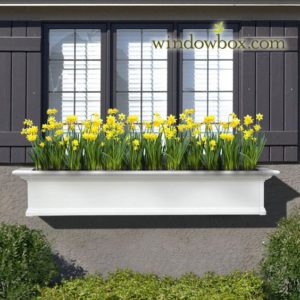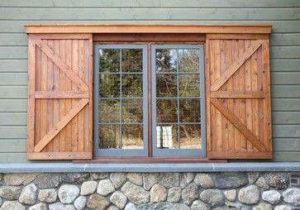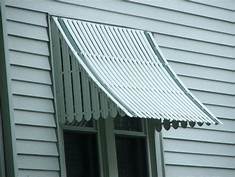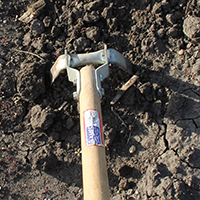Thatch is a layer of decomposed and partially decomposed organic matter located between the soil and green turf grass vegetation. When the bottom portion of the thatch becomes mixed with soil (for example, by earthworms) and is in the process of being broken down by soil microbes it forms a distinct layer called “mat”; an organic layer of greater decomposition. Degradation of thatch into mat is desirable since mat can hold more water and nutrients and as a result has better properties compared to thatch.
Identifying a thatch layer in your lawn is easily done by removing a piece of sod with a shovel and examining the cross section from the base of the turf plants to the soil surface. That is where the thatch and mat will be if it exists. There should be a definite layer, not a few loosely oriented old dead leaves about to be broken down.
Beneficial Qualities of Thatch
The resilient nature of thatch absorbs shock from traffic, yet the surface remains unaltered. In addition, thatch and mat resiliency tends to increase turfgrass wear tolerance caused by the compressive and shearing forces of traffic. It also provides a cushioning effect that helps reduce injuries during outdoor sports and recreation.
Thatch provides an insulating effect near the soil surface, thus protecting the turfgrass growing point (“crown”) from temperature extremes and serves as a barrier between soil and atmosphere that helps to reduce water loss due to evaporation from soil.
A modest layer of thatch has many large pores that allow water to drain readily as well as provide exchange of gases between soil and atmosphere. Thatch also has very small pores that retain water that is available for uptake by turfgrass roots.
Thatch is derived mostly from crown, sheath and stem tissue. The cell walls in these tissues are relatively high in lignin, important in tissue rigidity. Leaves, on the other hand, have lower concentrations of lignin and degrade more rapidly, thus contributing less to thatch development. Returned clippings contribute little to thatch when proper mowing frequency is followed; that is, not removing more than 1/3 of the leaf height at any mowing.
Problems from Excess Thatch
If thatch becomes excessive it is an indication that the turf is “out of balance”; that is, the rate of organic matter accumulation is greater than the rate of degradation. This is often due to factors that cause excessive turf growth like high annual nitrogen rates or high irrigation, or conditions that negatively impact the environment that works to decompose thatch, such as soil microorganisms that help degrade thatch, compacted soils, and persistent wet conditions. Thatch is considered excessive when the thickness is greater than one-half inch in home lawns.
Several problems may occur when thatch becomes excessive. For example, crowns may be elevated above the soil surface in the thatch layer, which is a poor medium for growth. Thatch is hard to re-wet when dry. This may lead to localized dry spots in which precipitation or irrigation runs off rather than infiltrates into the soil, where water is needed especially at high elevation levels. Excess thatch also provides an excellent home for certain turfgrass insect pests and fungal pathogens. Turf with an excessive thatch layer may be prone to scalping since mowing equipment wheels sink into the turf.
Resolving Excess Thatch Problems
To remediate thatch problems, discovering the cause or causes of excess thatch is important. As indicated before, the turf is “out of balance”. Consideration should be given to reducing nitrogen, watering “infrequently and deeply”, improving drainage, maintaining proper mowing height and frequency, and careful use of pesticides. Some turfgrass species/cultivars tend to be heavier thatch producers like fescues vs bluegrass, so renovating or reestablishing lawns with turfgrasses that produce less thatch may be beneficial.
Relative thatching tendency of cool-season turfgrasses:
Thatch reduction by mechanical methods is best performed by hollow tine core aeration followed by redistribution of soil cores into the turf. This promotes biological degradation of thatch by soil microorganisms. Core cultivation or dethatching is best done when followed by several weeks of good turf growing conditions. Target dates are generally around Memorial Day in spring and Labor Day in fall.
Dethatching using a power rake or vertical mower is a secondary alternative, but care should be taken to use the proper equipment that has blades spaced at least two or more inches apart to avoid injury to turfgrass crowns. Dethatching by vertical mowing can create a great deal of debris that must be disposed of or composted.
If a thatch layer has gotten out of control (greater than 1 inch) it is unrealistic to think it can be effectively reduced by one coring or one vertical mowing. The remedy may require spring plus late season coring and vertical mowing until it is under control.
Thatch formation to a problematic depth does not happen overnight. It happens over a few years and depends on the grass type, how the turf is managed, and some unique site conditions that might work against thatch decomposition in the turf/soil system.





